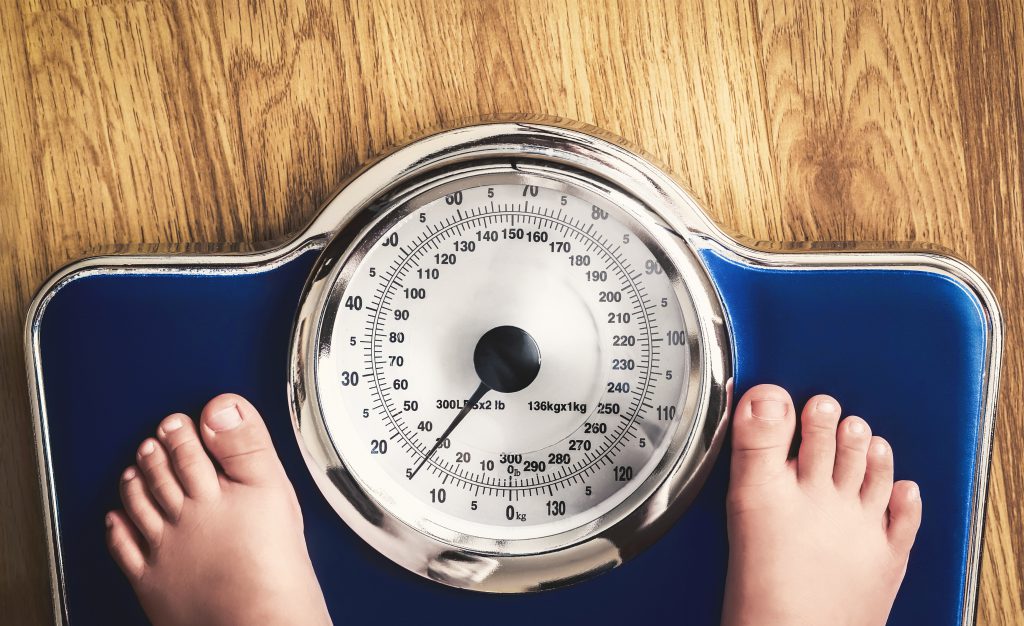As of 2019, over 50 million children under the age of 5 were overweight (UNICEF, 2019). This number continues to rise in both high and low-income countries, as the economic impact of global obesity exceeds US$2 trillion – roughly 2.8% of the world’s gross domestic product (GDP) (UNICEF, 2019). Though there are numerous drivers and enablers of global childhood obesity, the worldwide increase in children’s ‘screen time’ has been accompanied by greater exposure to manipulative emotion-based food and drink marketing.
Recent research has indicated that there is a clear link between the food and drink advertisements that children are exposed to and their food choices, cravings and eating patterns (Obesity Health Alliance, 2017). Increases in childhood obesity are thus a natural response to the persuasive and sophisticated techniques utilised by corporations on multiple platforms; such as television (TV), mobile phones and tablets (Smith, 2019).
Modern food and drink marketing campaigns have seeped into traditionally safe spaces, such as schools, retail outlets and households themselves (UNICEF, 2019). In response, corporations in countries such as the United States of America (USA) have pledged to self-regulate their marketing to children, but this appears to warrant further attention (American Psychological Association, 2010). In the USA, nearly 75% of foods advertised to children are classified as unhealthy, while 50% of the allocated time for children’s TV shows is occupied by food advertisements – none of which advertise fruits or vegetables (American Psychological Association, 2010). A child rights-based approach must be adopted to safeguard children’s right to healthy food and adequate nutrition (UNICEF, 2019).
What is Childhood Obesity?
Childhood obesity is officially diagnosed once a child exceeds the scientifically-determined “normal” weight for a child of their age and build (Center for Disease Control and Prevention, 2021). Driven by both genetic or external factors, obesity can cause a myriad of health complications including high blood pressure, high cholesterol, diabetes, breathing difficulties, musculoskeletal challenges and liver disease, among others (Center for Disease Control and Prevention, 2021).

The World Health Organisation (WHO) has labelled childhood obesity as “one of the most serious public health challenges of the 21st century”, as the crisis continues to expand to many low and middle-income countries, especially their urban settings (WHO, 2020). Global trends towards more sedentary behaviour in children, combined with the increased accessibility of affordable unhealthy food are pushing many children towards unhealthy lifestyles at a dangerously young age (WHO, 2020).
What is Food Advertising?
Food advertising or marketing involves the ‘use of persuasive techniques and strategies to shape and influence children’s food attitude, preference and consumption’ (Smith, 2019). As illustrated, children are commonly exposed to food advertising campaigns via technological devices and media, often in a way that is largely unavoidable. To combat this, nations around the world are beginning to theorise new policies to better protect children.
In the United Kingdom (UK), for example, health secretary Matt Hancock recently unveiled plans to ban online junk food advertising in an attempt to “help parents, children and families in the UK make healthier choices about what they eat” (Sweeney, 2020). Bans such as this, say the Department of Health and Social Care, will help prevent children’s long-term food preferences and eating habits from being corrupted by manipulative marketing campaigns (Department of Health and Social Care, 2020).
Food advertising aims to shape and define children’s food environments. Food environments are areas and sectors in which children and their families engage with food (UNICEF, 2019). Vast and drastic changes in these environments, such as the greater prevalence of unhealthy foods, drives the global growth in obesity levels (UNICEF, 2019). Within these environments, children are especially vulnerable due to their consistent exposure to tactful marketing strategies designed to persuade them (UNICEF, 2019). Children are often unable to see through these manipulative schemes, making them prime targets for exploitation at the hands of commercial enterprises who use emotional brand associations to encourage children to crave unhealthy food (UNICEF, 2019).
These companies take advantage of children’s ‘pester power’, referring to the amount of pressure children are able to put on their parents to drive unhealthy food purchases (UNICEF, 2019). In addition to the existing challenges faced by all children, food advertising companies have also been shop to disproportionately target disadvantaged children from particular ethnic, racial and socioeconomic groups, widening inequities in health and infringing upong the right to non-discrimination (UNICEF, 2019).
The Impact of Food Advertising on Child Development
Children at the early stages of their development are in the ‘pre-cognition’ phase of their cognitive defence, this means that they are unlikely to question the integrity and intention of advertising campaigns (Smith, 2019). This fact also points to one of the detrimental impacts of food marketing on children which is the infringement of their right to appropriate information under Article 17 of the Convention on the Rights of the Child (CRC) (Smith, 2019). This can severely hamper children’s mental development and shape their preferences long into adulthood, especially as children are able to recognise and crave brands at just 18 months old (Obesity Health Alliance, 2017).

Aside from the mental health impacts of food advertising, the practice also enhances the risk that children develop obesity. Beyond the direct physical health risks that this brings, overweight children are also more likely to suffer from behavioural and emotional difficulties, including low self-esteem, depression and poor social skills (UNICEF, 2019). The food industry will often blame parents for their irresponsibility in failing to control and regulate their children’s diet and exposure to advertising (Harris, 2009).
Though parents do hold culpability for their children’s habits, particularly in shaping their lifestyle and access to healthy food, the boom of digital media and technologies makes it difficult for even the most diligent parents to protect their children from being exposed to harmful food advertising. With marketing companies repeatedly labelling unhealthy food as ‘fun’, ‘cool’ and ‘great-tasting’, parents face an uphill battle to convince their children otherwise (Harris, 2009).
Global Approaches to Restrict Food Advertising
As countries around the world search for new methodologies to combat food advertising, research from Europe suggest that countries would benefit from the adoption of stricter advertising regulations. In Spain – a country in which “81% of children drink sugar-sweetened beverages and soft drinks weekly” – an advertising regulatory framework has been established to monitor junk food advertising for children under the age of 12 (Southey, 2020).
Law-makers in the UK, Ireland and Sweden have similarly enacted legislation to restrict the promotion of products high in fat, sugar or salt (HFSS) (Southey, 2020). In the UK, HFFS cannot be promoted on media channels with an audience of more than 25% under 16, while Ireland adopts a similar provision for channels where over half the audience are under 18 (Southey, 2020). Sweden has adopted a harsher stance altogether, banning HFFS promotions entirely during programmes targeted at children under 12 years old, an approach that was also adopted by Slovenian legislation in 2017 (Southey, 2020).
A Rights-Based Approach to Improving Children’s Food Environment
Beyond Europe, in 2020 the WHO-UNICEF-Lancet Commission advocated for the drafting and implementation of a globally binding optional protocol to the CRC, to combat ‘predatory commercial practices’ by preventing brands from marketing fast foods and unhealthy drinks to children (Southey, 2020). The protocol would simultaneously regulate specific marketing methods and seek to prevent the exploitation of children’s data by commercial entities (Southey, 2020).
A policy of this kind would help harmonise discrepancies in international approaches towards children’s rights to appropriate information and adequate nutrition. This framework would also support Sustainable Development Goals (SDGs) 17 which works to promote health, among other factors, as well as combat the wider commercialisation of children who are increasingly exposed to harmful practices (Southey, 2020). A rights-based approach to food advertising would recognise the nuances of the practice – targeting vulnerable populations – and address one of the overlooked root causes of childhood obesity (UNICEF, 2019).
“Applying a human-rights-based approach to the child’s right to food and nutrition in a holistic manner requires good governance and political will at national and international levels. Once this political will is garnered, improving participation, accountability, monitoring and transparency are the first steps to implementing human rights principles effectively.”
Hilal Elver, United Nations Special Rapporteur on the Right to Food.
Policy Recommendations
Children not only have health needs, but rights too (UNICEF, 2019). Food advertising must be conceptualised as a human rights issue, rather than merely a public health concern (Professor Garde, 2020). An approach of this kind shifts the focus away from unethical practices and towards the experiences of the child (Professor Garde, 2020). The CRC provides a list of recommended actions to support the healthy development of children using a child rights-based approach (UNICEF, 2019).
The WHO has also developed a list of 12 recommendations to support countries in their design of policies and initiatives to protect children against exploitative food advertising (WHO, 2010). Below national-level policies, communities can also work to elevate public awareness of the food advertising issue, enhance communication between parents and children on the harmful effects of advertising, and reduce children’s exposure to dangerous marketing schemes (Harris, 2009). From top-down approaches led by governments, to bottom-up approaches led by parents, there is an urgent need to address the world’s food advertising problem, for the protection of children’s rights.

Humanium supports projects for children on a global scale. Our projects aim to put an end to the violations of children’s rights. They are designed and implemented in cooperation with local partners. Humanium projects in Rwanda and India, amongst other countries, have placed the right to food, healthy food and clean water at its forefront by running various workshops with local partners to support children.
At Humanium, we seek to raise awareness on the importance of children’s rights to food, education and protection. Join us in making children’s rights to a safe environment and accessible education a reality by sponsoring a child, making a donation or becoming a volunteer!
Written by Vanessa Cezarita Cordeiro
For More Information:
London’s Child Obesity Taskforce.
References:
American Psychological Association. (2010). The impact of food advertising on childhood obesity.
Harris, J.L. Bargh, J.A. (2009, October). “The relationship between television viewing and unhealthy eating: implications for children and media interventions.” Health Communication. 24(7), 660-673.
Howard, J. (2016, November 22). “The ‘surprising way food ads sway preschoolers’ snacking habits.”
Osei-Assibey, G. Dick, S. Macdiarmid, J. Semple, S. Reilly, J. Ellaway, A. Cowie, H. McNeill, G. (2012, November 12). ‘The influence of the food environment on overweight and obesity in young children: a systematic review.” British Medical Journal. 2(6).
Professor Garde, A. (2020, February 14). “Protecting children from harmful food marketing.”
Smith, R. Kelly, B. Yeatman, H. Boyland, E. (2019, April 18). “Food marketing influences children’s attitudes, preferences and consumptions: a systematic critical review.” Nutrients. 11(4), 875.
Sweney, M. (2020, November 10). “UK to ban all online junk food advertising to tackle obesity.”
UNICEF. (2019). “Protecting Children’s Right to a Healthy Food Environment.”


